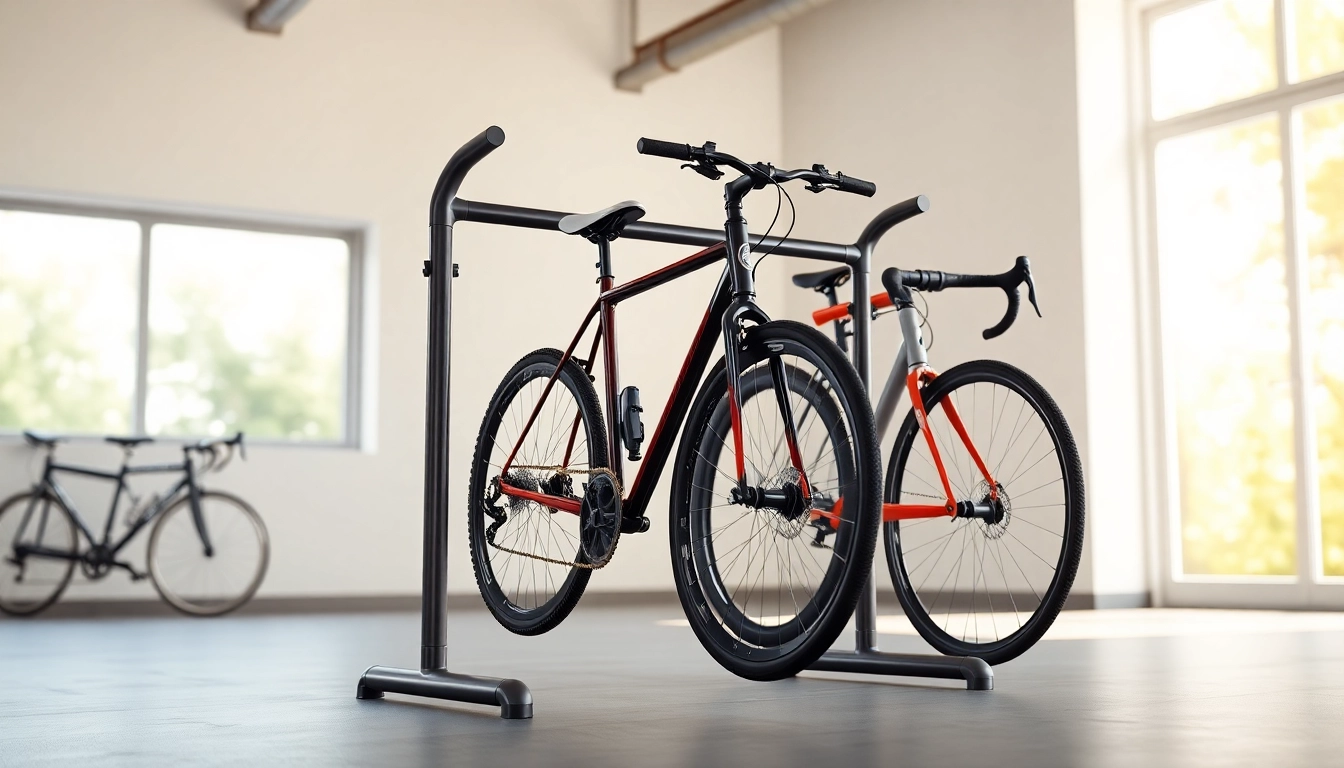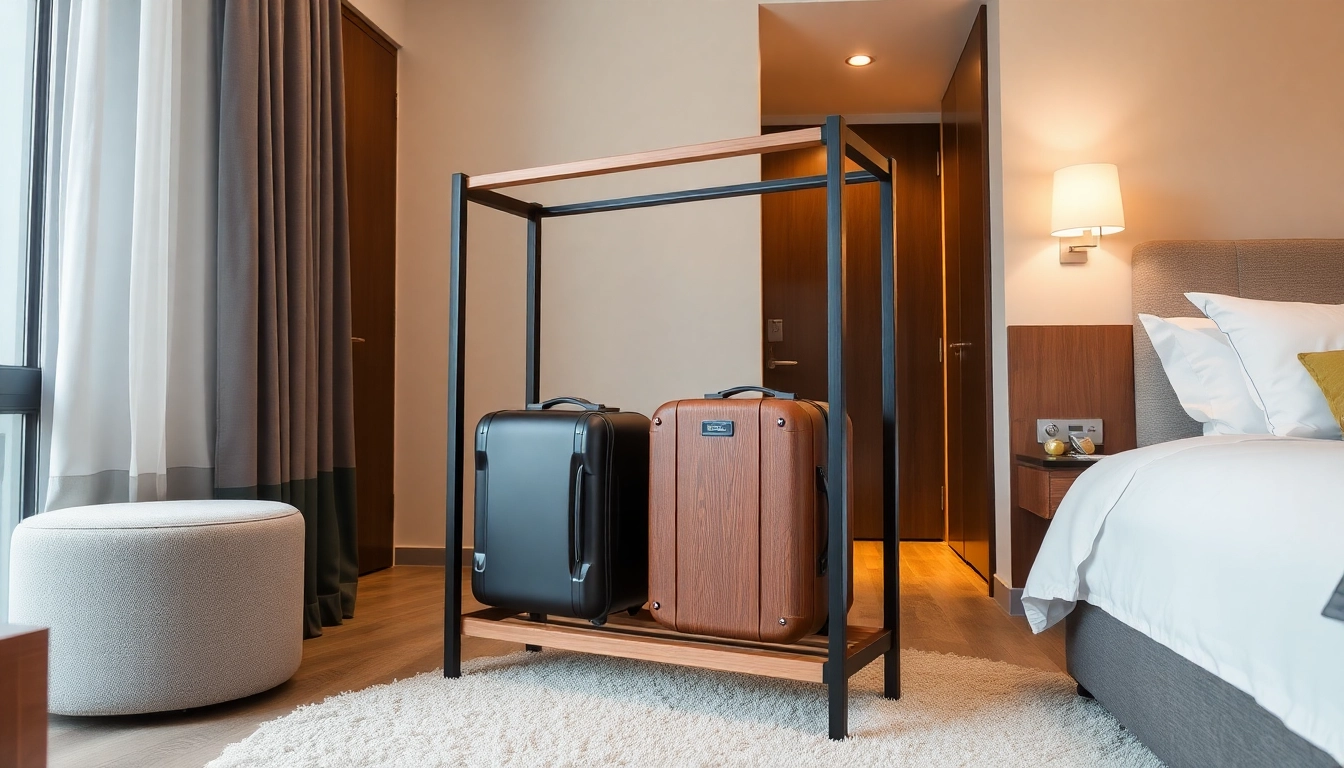Understanding the Importance of Space-saving Bike Rack
As urban environments become increasingly crowded and living spaces shrink, the need for effective storage solutions is more pressing than ever. One notable option is a Space-saving bike rack, which maximizes the available space while ensuring your bicycle is safely stored and easily accessible. This article explores the importance of having a space-saving bike rack, its myriad benefits, different types available, installation procedures, and tips for maintaining an efficient storage solution.
Why Choose a Space-saving Bike Rack?
Choosing a space-saving bike rack is crucial for several reasons, especially if you’re limited on space. Traditional bike storage options can consume a significant amount of floor area, creating obstruction in tight spaces. Here are some compelling reasons to consider a space-saving rack:
- Maximizes Usable Space: A space-saving bike rack makes efficient use of vertical space, allowing you to store bicycles high or compactly against walls.
- Improves Accessibility: With a well-planned arrangement, you can easily access any bike without having to move others out of the way.
- Enhances Aesthetics: A tidy storage solution enhances the overall look of your living space or garage.
- Protects Bikes: Storing bikes properly reduces the risk of damage from falling or being knocked over.
Benefits of Using Space-saving Bike Rack
Opting for a space-saving bike rack offers numerous tangible benefits, crucial for every cycling enthusiast or occasional rider alike:
- Efficient Use of Space: Space-saving designs allow compact storage of multiple bikes, freeing up room for other purposes.
- Safety Considerations: Proper bike racks prevent accidents, keeping bikes secure and minimizing hazards in walkways.
- Flexibility: Many space-saving racks can be adapted for different spaces, such as apartments, garages, or even outdoors.
- Reduced Clutter: A designated place for bikes keeps your living area organized and clutter-free.
Key Features to Look for in a Space-saving Bike Rack
When selecting a space-saving bike rack, consider these key features to ensure it meets your needs:
- Weight Capacity: Check the rack’s ability to hold the weight of your bike models, including any accessories.
- Material Durability: Opt for high-quality materials that can withstand the elements if you plan to use it outdoors.
- Easy Installation: Some models are designed for quick setup, requiring minimal tools.
- Adjustability: Choose racks that can fit various frame styles or allow for adjustments based on the space.
- Design Efficiency: Consider how it fits within your available space and its overall aesthetic appeal.
Types of Space-saving Bike Racks
Understanding the different types of space-saving bike racks available can help you make an informed decision based on your specific needs and available space.
Wall-mounted Space-saving Bike Rack
Wall-mounted racks are ideal for those with limited floor space. These racks secure to the wall and hold bikes vertically or horizontally, ensuring they don’t take up unnecessary room. When installing a wall-mounted rack, ensure it is anchored correctly to hold the weight of the bicycles and fits your wall type securely.
Freestanding Space-saving Bike Rack
Freestanding bike racks can be placed anywhere in your garage, backyard, or even on the balcony. They usually take advantage of vertical space and can hold multiple bikes. This type is particularly valuable as it allows easy movement around it while providing flexibility in positioning.
Ceiling-mounted Space-saving Bike Rack
Ceiling-mounted racks are designed to store bikes directly overhead. These racks can be particularly useful in garages or rooms with high ceilings. They may require some mechanical assistance for raising and lowering the bike for access, but they are extremely effective at keeping open space on the floor.
How to Install Your Space-saving Bike Rack
Installing a space-saving bike rack can seem like a daunting task, but with the right tools and instructions, it can be achieved efficiently. Follow these steps to ensure proper installation.
Installation Tools and Materials Needed
Before starting your installation, gather the following tools and materials:
- Drill with appropriate drill bits
- Stud finder (for wall-mounted options)
- Level
- Pencil or marker for marking locations
- Fastening hardware (screws, bolts, etc., typically included with the rack)
- Measuring tape
Step-by-Step Installation Process
Here’s a step-by-step guide to help you through the installation:
- Choose the Location: Identify an accessible and suitable area for the rack based on the type of rack you have chosen.
- Mark Drill Holes: With the help of a level, mark where the rack will be affixed to the wall or ceiling, ensuring they are even and aligned.
- Drill Holes: Use your drill to make holes at the marked points. If you are anchoring to the wall, be sure you drill into the studs.
- Attach the Rack: Align the rack with the drilled holes and secure it tightly with the provided hardware.
- Check Stability: Ensure that the rack is level and securely anchored before placing any bicycles on it.
Common Mistakes During Installation
Avoid these common pitfalls to ensure a successful installation:
- Neglecting Studs: Failing to anchor wall-mounted racks properly to studs can lead to instability.
- Incorrect Measurements: Not measuring correctly can lead to misalignment, making it difficult to store or retrieve bikes.
- Overtightening Screws: Be careful not to overtighten screws or bolts, which can damage the rack or wall.
Optimizing Your Space with Space-saving Bike Rack
After installing your space-saving bike rack, you can optimize your space even further. The arrangement and maintenance of your bike rack will play a critical role in efficiency.
Arranging Bikes for Maximum Efficiency
Consider these tips when arranging your bikes:
- Heaviest Bikes on Bottom: When using vertical storage, always place the heaviest bikes on the bottom for stability.
- Accessibility: Place bikes you use most frequently at eye-level or on the lowest slots for easy access.
- Seasonal Storage: If you have bikes you use only occasionally, such as a holiday bike, place those higher or further away.
Integration with Other Storage Solutions
Consider combining your bike rack with other storage options. Here are some ideas:
- Accessory Hooks: Install hooks near the bike rack for helmets, bags, and other cycling gear.
- Banquette Storage: A storage bench can serve as both seating and a place to store bike-related items.
- Wall Shelving: Adding shelves above or beside the rack can store maintenance tools and supplies.
Maintaining Your Space-saving Bike Rack
Regular maintenance helps keep your bike rack in good condition and prolongs its lifespan. Follow these practices:
- Frequent Inspections: Regularly check for any loose screws or structural weaknesses.
- Cleaning: Clean the rack periodically to avoid rust or corrosion, especially if exposed to moisture.
- Regular Bike Maintenance: Keep the bikes well-maintained to prevent damage to the rack and ensure safe usage.
Purchasing Tips for Space-saving Bike Rack
When it comes to purchasing a space-saving bike rack, careful consideration is vital to ensure you make the right choice. The following tips can guide your decision-making process.
Where to Buy Space-saving Bike Rack
You can find space-saving bike racks in a variety of places, including:
- Home Improvement Stores: Stores usually have a range of bike racks in different styles and price ranges.
- Online Retailers: Online platforms offer extensive options, often with user reviews that can aid your choice.
- Specialized Cycling Stores: These outlets can provide expert recommendations and specialized storage solutions.
Price Range and Quality Considerations
Price ranges for space-saving bike racks can vary based on material, design, and brand. Here’s a quick breakdown:
- Low-End Options: These are typically under $50 and may be suitable for lightweight bikes.
- Mid-Range Options: Priced between $50 and $150, they usually have better construction and adaptability.
- High-End Models: Above $150, these often feature advanced designs, higher weight capacities, and materials built for durability.
Reading Reviews and Comparing Options
Finally, it is crucial to read reviews and compare options. Look for input from users who have similar bike types and storage space as you. Pay attention to:
- Ease of Use: Feedback on how easy it is to store and retrieve bikes.
- Stability: Comments on how sturdy the rack is when in use.
- Assembly Instructions: Users often highlight the clarity and thoroughness of installation guides.



